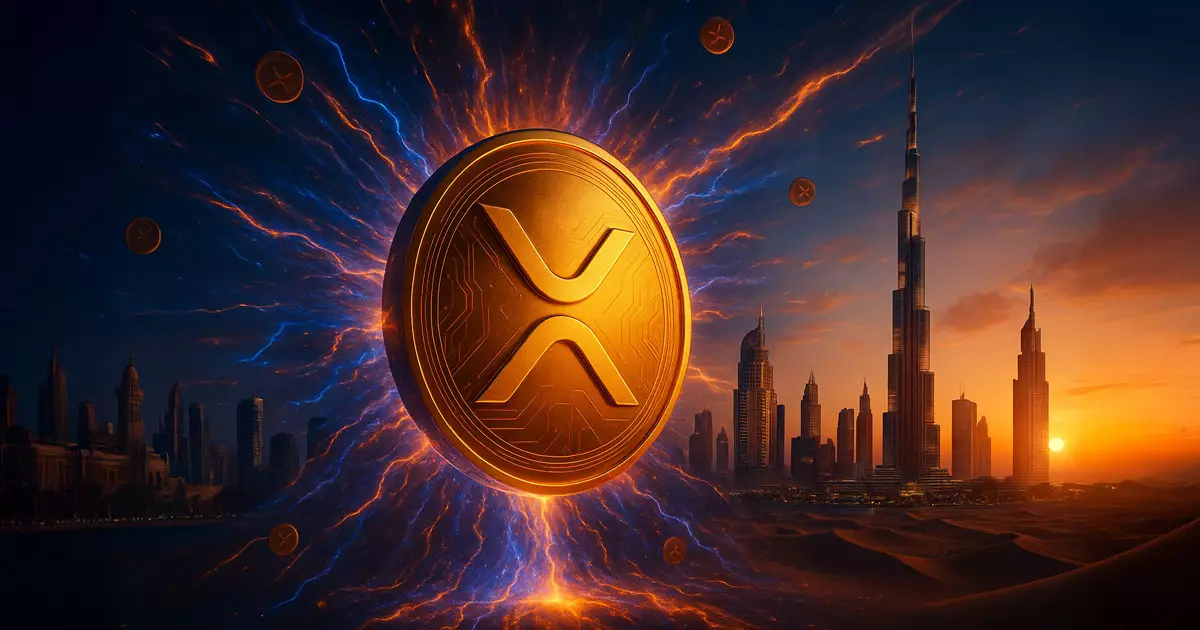The recent surge in Ripple’s stablecoin, RLUSD, has ignited conversations across the cryptocurrency spectrum. The circulating supply saw a staggering 29% increase, bolstering the total to $320.6 million—a significant milestone that marks the first crossing of the $300 million barrier for the token, which was launched just over six months ago. In a market where stablecoins are increasingly scrutinized, this considerable leap begs the question: Is this a sign of a broader shift in the crypto economy, particularly within the realm of regulated finance?
Contextualizing the Numbers
The data provided by Artemis demonstrates a parallel rise in weekly transfer volume, soaring by 38% as it scaled up to $648.1 million. This spike is astounding when juxtaposed with earlier figures, and while it still lags behind peak volumes recorded in the past, such numbers play a vital role in the ongoing narrative surrounding RLUSD. It’s worth noting that despite this momentum, RLUSD still manages to occupy a mere 0.1% market share within the overwhelming $236 billion stablecoin ecosystem. This raises eyebrows: Can a stablecoin of such modest size legitimately rival giants like USDT and USDC, which collectively command a majority of the space?
The Halo of Regulatory Backing
What sets RLUSD apart from its peers is the robust regulatory framework under which it operates. Ripple’s ability to mint this token under a New York trust-company license and back it with short-term Treasuries and cash deposits instantly instills a certain level of confidence among users and investors. With the recent approval from the Dubai Financial Services Authority (DFSA), RLUSD is now positioned for significant international engagement, opening doors for local regulated firms to utilize it for settlement transactions. This endorsement not only validates Ripple’s strategic footprint in the Middle East but also intertwines RLUSD’s future with a flourishing digital economy.
The Competitive Landscape
Despite this impressive growth, it is essential to regard Ripple’s ambitions with a dose of realism. USDT continues to dominate with a substantial $157.9 billion market cap, followed closely by USDC at $59.6 billion. Even the smaller players are witnessing modest growth, leading to the question of longevity for RLUSD amid this competitive landscape. Ripple’s strategic moves, such as its recent acquisition of the prime brokerage platform Hidden Road, hint at aggressive development tactics, yet they demand scrutiny. The crypto space is characterized by volatility, reminiscent of the digital gold rush, and while RLUSD’s growth is worthy of attention, questions about its long-term viability linger.
A Vibrant Future or Just Another Fad?
Critics may argue that while Ripple’s RLUSD has experienced some notable success, it remains crucial to observe how sustainable this growth is when pitted against significant competitors and possibly tumultuous market responses. The calls by Ripple’s managing director regarding the burgeoning demand for digital-asset solutions in the Middle East reflect potential opportunity, but similar proclamations have often been tempered by the inherent volatility of cryptocurrency markets.
In closing, while I remain cautiously optimistic about RLUSD’s potential, there also exists an undercurrent of skepticism. The space is fraught with pitfalls, and the future trajectory of this digital currency will depend on more than just regulatory approval and market positioning—it will hinge on genuine adoption and utility among users.

